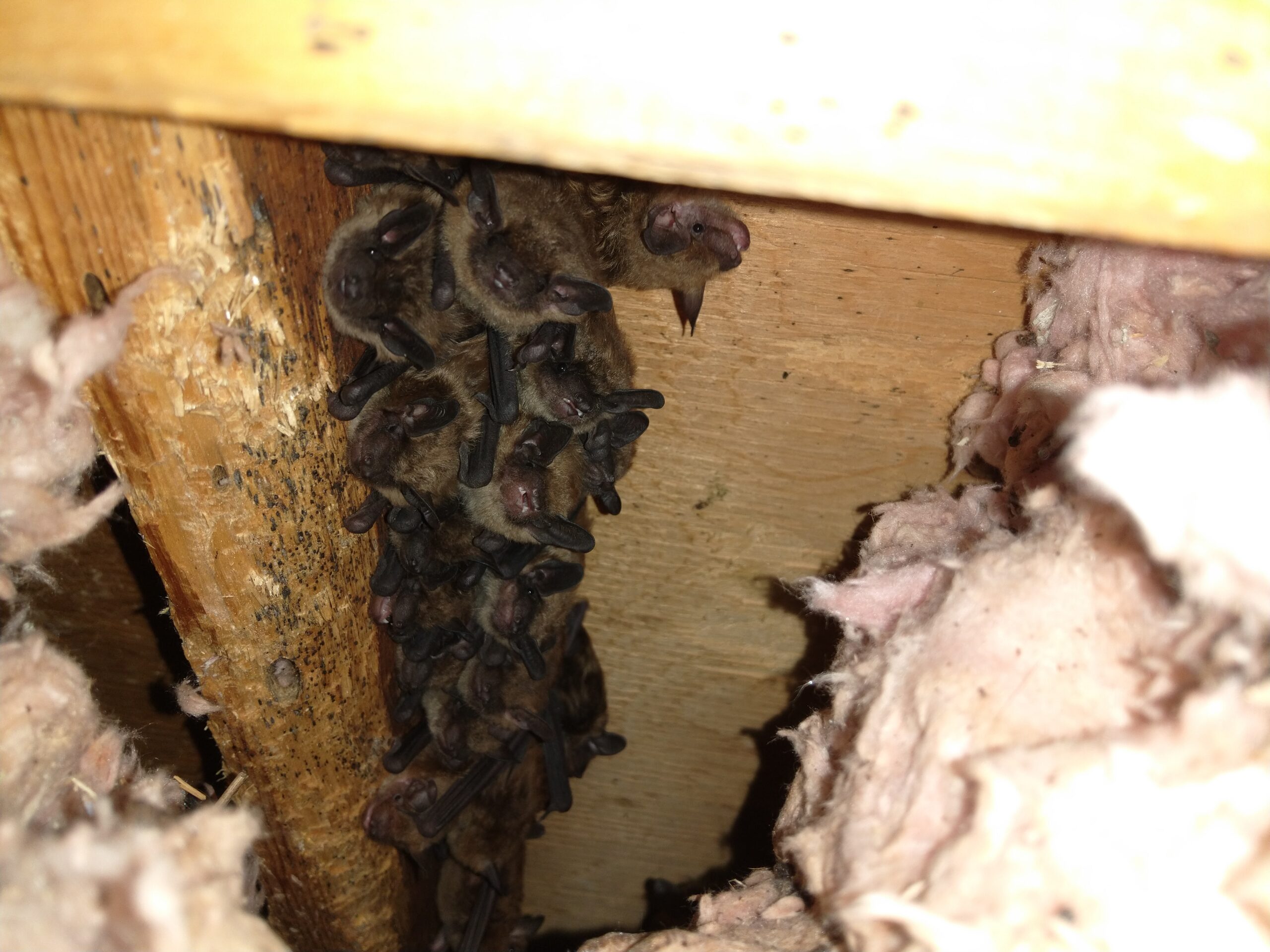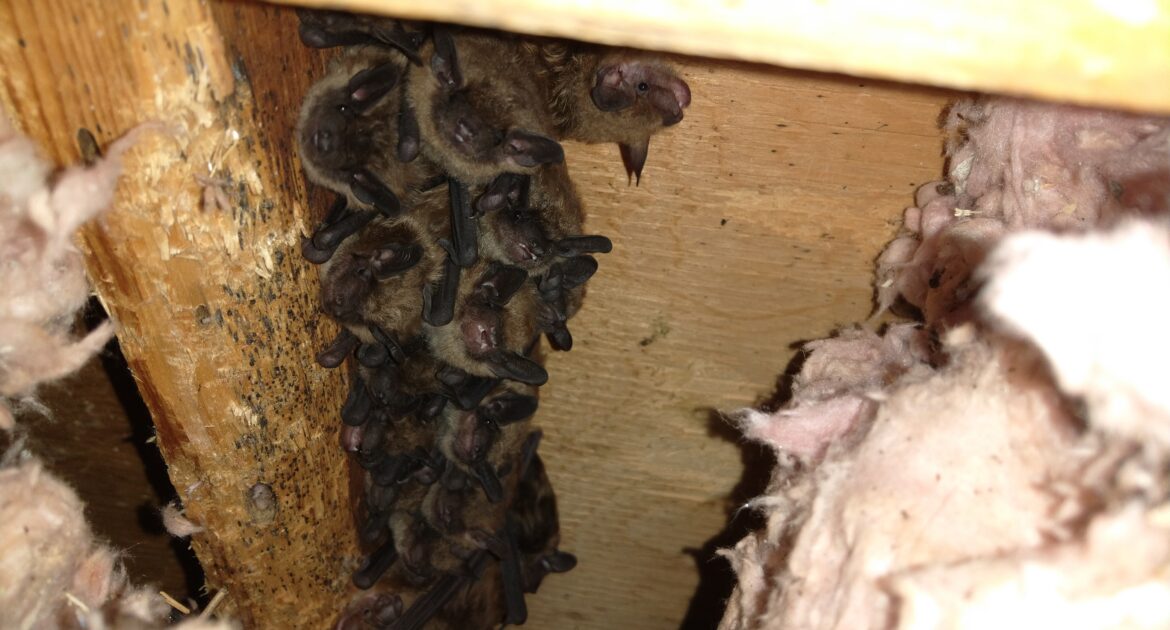Bats are common wildlife in Canada, and while people may admire them from afar, the idea of a bat in the attic is terrifying for many homeowners. Learning how to get rid of bats in the attic is all about understanding who to hire. A humane wildlife control service can help you resolve your bat problem and avoid some of the many dangers of such an infestation.
3 Dangers of Bats in the Attic
Despite their tiny size, bats are dangerous and present several hazards and risks to homeowner safety. While bats are not prone to attacking or biting humans, they can still spread disease and contaminate living areas. Knowledgeable homeowners must understand the three issues of having bats in their attic.
1. Insulation and Structural Damage
Bat guano or excrement is dangerous in its own right, but one of the main concerns is how it can affect attic insulation and structure. Bat excrement usually accumulates in piles. The animals continue to use the same piles causing the guano to build up.
If you have exposed insulation in the attic, the guano will compress the material. Any moisture from the excrement will soak into the material and seep into the surrounding wood.
In many cases, insulation and contaminated wood needs replacing. Depending on the length of time bats had access to an attic space, a complete renovation is the only option.
2. Guano and Disease
Wildlife control services in Victoria warn homeowners to avoid DIY removal and cleanup of bat infestations. Bat guano can carry bacteria and harmful diseases.
If bat guano accumulates and dries out, the bacteria can become airborne. Families may become infected by transmissible diseases.
One of the most concerning diseases carried by bats is Histoplasmosis. The disease is a respiratory illness that spreads by inhaling contaminated vapours from guano.
Bats may also carry and transmit rabies, which is a lethal illness when not treated within a specific timeframe. Fortunately, rabies is an extremely rare disease in developed regions, and the likelihood of getting the disease from a bat is slim.
3. Bat Death and Contamination
While bats may populate an attic space, it is common for the animals to make their way into a home’s wall cavities. The species is sensitive to temperature fluctuations and prefers to find a space with stable temps.
Unfortunately, bats can sometimes get stuck in wallcavities and die. When a bat dies, it gives off an awful stench as it decomposes. The odour can seep through the walls and affect the entire house.
Not only is it challenging to remove the odour, but the smell and presence of an animal carcass can draw in insects and bugs. As with many other wildlife infestations, one problem usually leads to another.
The Importance of Hiring a Bat Removal Service
Some homeowners may feel that DIY removal is possible, safe, and cost-effective; they would be wrong. Bats are a protected species, so there are specific rules that guide the animals’ removal. Also, bats can carry and transmit diseases and bacteria. Finally, most DIY methods are inefficient, often requiring the later use of a professional wildlife control service.
Professional services understand all current regulations and can remove the wildlife from your property without putting you or your family in harm’s way. Also, a humane wildlife service will ensure the bats are unharmed during the entire process. Contact Skedaddle Humane Wildlife Control to learn more about the company’s approach to wildlife control and schedule a property inspection.




